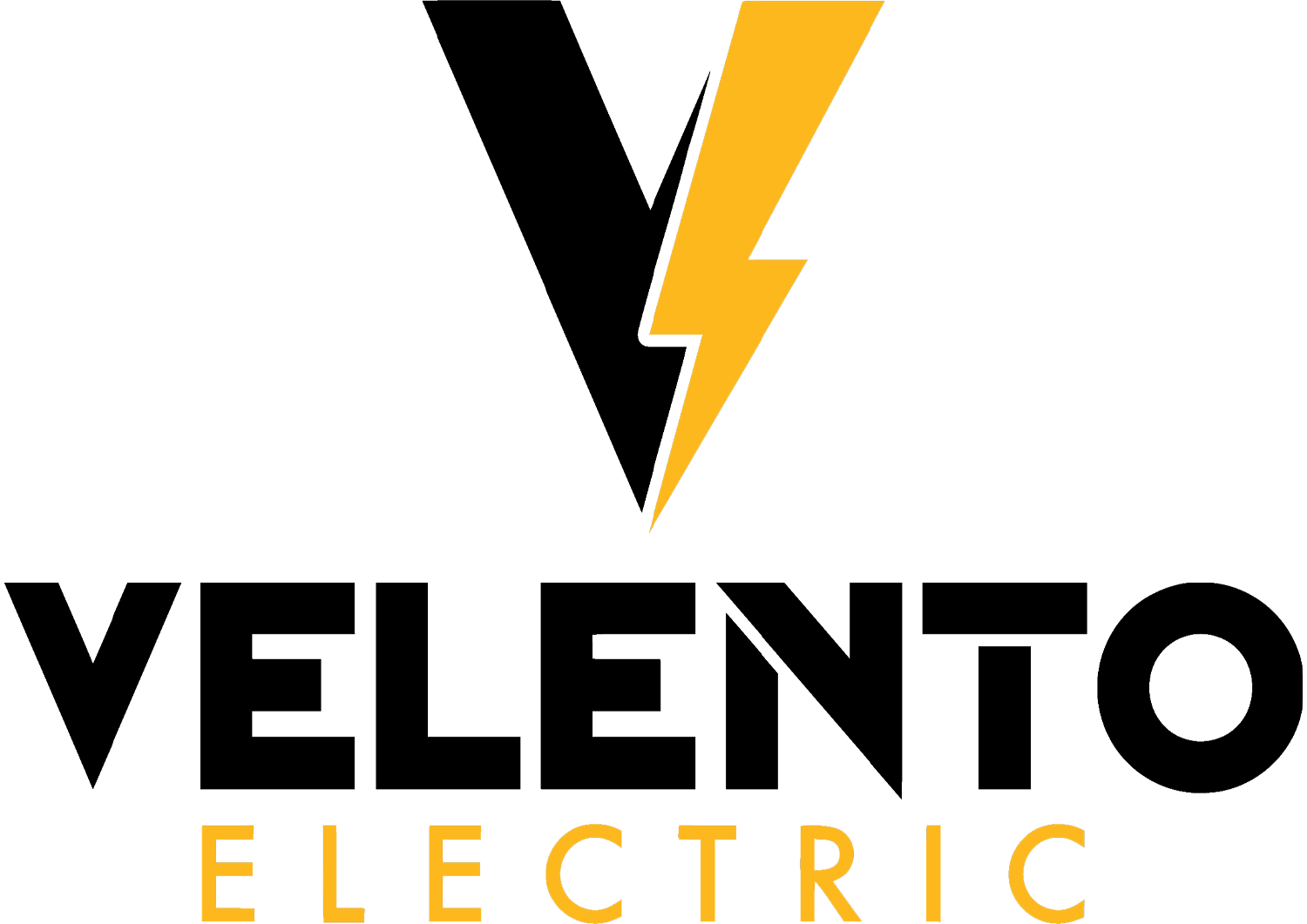Ensuring that your home’s electrical system is safe and functional is crucial for preventing hazards and maintaining comfort. Here are several key electrical repairs and upgrades that can significantly enhance the safety and efficiency of your New Jersey home:
-
Upgrade Your Electrical Panel
Overview: The electrical panel is the heart of your home’s electrical system, distributing power to various circuits. An outdated or faulty panel can be a major safety risk.
Benefits:
- Increased Capacity: Modern appliances and electronics require more power. Upgrading the panel can handle the increased load, preventing overloaded circuits.
- Enhanced Safety: New panels come with advanced safety features that reduce the risk of electrical fires and shocks.
- Compliance with Code: Ensures your home meets current electrical codes and standards, which is essential for safety and insurance purposes.
Considerations:
Professional Installation: Always hire a licensed electrician for panel upgrades to ensure the job is done safely and correctly.
-
Install Ground Fault Circuit Interrupters (GFCIs)
Overview: GFCIs are designed to protect against electrical shock by shutting off the power when an imbalance is detected in the electrical current. They are particularly important in areas where water and electricity are in close proximity, such as bathrooms, kitchens, and outdoor locations.
Benefits:
- Shock Prevention: Reduces the risk of electrical shock, which can be life-threatening.
- Code Compliance: GFCIs are required by electrical code in many areas of the home.
- Enhanced Safety: Provides peace of mind knowing that your electrical system has an additional layer of protection.
Considerations:
Regular Testing: GFCIs should be tested monthly to ensure they are functioning properly.
-
Replace Faulty Wiring
Overview: Old or damaged wiring is a common cause of electrical fires. Replacing faulty wiring can significantly reduce this risk.
Benefits:
- Fire Prevention: Reduces the risk of electrical fires caused by old or damaged wiring.
- Improved Reliability: New wiring ensures a more reliable electrical system, reducing the likelihood of power outages and electrical failures.
- Increased Home Value: Upgrading wiring can increase the value of your home, making it more attractive to potential buyers.
Considerations:
Inspection and Assessment: Have a licensed electrician inspect your wiring to determine the extent of the replacement needed.
-
Install Arc Fault Circuit Interrupters (AFCIs)
Overview: AFCIs are designed to detect and interrupt arcing faults, which are a leading cause of electrical fires. They are now required by code in many areas of the home.
Benefits:
- Fire Prevention: AFCIs can prevent electrical fires caused by arc faults, which are often undetectable by standard circuit breakers.
- Enhanced Protection: Provides an additional layer of protection beyond traditional circuit breakers.
- Peace of Mind: Knowing that your home is protected against one of the leading causes of electrical fires can give you greater peace of mind.
Considerations:
Compatibility: Ensure your electrical system is compatible with AFCIs before installation.
-
Upgrade to LED Lighting
Overview: Replacing incandescent or fluorescent bulbs with LED lighting can improve energy efficiency and reduce the risk of electrical hazards.
Benefits:
- Energy Efficiency: LEDs consume significantly less energy, reducing your electricity bills.
- Longevity: LED bulbs last much longer than traditional bulbs, reducing the frequency of replacements.
- Safety: LEDs produce less heat, reducing the risk of fire associated with overheated bulbs.
Considerations:
Initial Cost: While LEDs are more expensive upfront, they save money in the long run through lower energy use and longer lifespan.
-
Install Smart Home Devices
Overview: Integrating smart home devices into your electrical system can enhance safety, convenience, and energy efficiency. Smart devices include smart thermostats, lighting controls, smoke detectors, and security systems.
Benefits:
- Remote Monitoring: Smart devices allow you to monitor and control your home’s electrical system remotely via a smartphone app, providing real-time updates and alerts.
- Energy Efficiency: Smart thermostats and lighting controls can optimize energy use, reducing electricity bills.
- Enhanced Safety: Smart smoke detectors and security systems can alert you to potential hazards, even when you are away from home.
Considerations:
- Compatibility: Ensure that smart devices are compatible with your existing electrical system.
- Internet Dependence: These devices rely on an internet connection, so a stable Wi-Fi network is essential.
-
Surge Protection Installation
Overview: Surge protectors safeguard your home’s electrical devices from voltage spikes caused by lightning strikes, power outages, or electrical faults.
Benefits:
- Protection of Electronics: Prevents damage to valuable electronics and appliances from power surges.
- Increased Lifespan: Extends the lifespan of your electrical devices by protecting them from sudden voltage spikes.
- Whole-House Protection: Whole-house surge protectors provide comprehensive protection for all the electrical devices in your home.
Considerations:
- Professional Installation: Whole-house surge protectors should be installed by a licensed electrician to ensure proper protection.
- Regular Maintenance: Surge protectors should be checked regularly to ensure they are functioning correctly.
-
Replace Old Outlets and Switches
Overview: Old or damaged outlets and switches can be a significant safety hazard. Replacing them with new, modern outlets and switches can improve safety and functionality.
Benefits:
- Enhanced Safety: Reduces the risk of electrical fires and shocks caused by faulty outlets and switches.
- Modern Features: New outlets can include modern features like USB charging ports, GFCI, and AFCI protection.
- Aesthetic Improvement: Replacing old outlets and switches can update the look of your home’s interior.
Considerations:
Professional Installation: Ensure outlets and switches are installed by a licensed electrician to guarantee safety and code compliance.
-
Regular Electrical Inspections
Overview: Regular electrical inspections by a licensed electrician can identify potential hazards and ensure that your home’s electrical system is safe and up to code.
Benefits:
- Early Detection: Identifies potential issues before they become major problems, preventing costly repairs and hazards.
- Peace of Mind: Regular inspections provide assurance that your electrical system is functioning safely.
- Code Compliance: Ensures your home meets current electrical codes and standards, which is essential for safety and insurance purposes.
Considerations:
Professional Service: Always hire a licensed electrician for thorough and accurate inspections.
-
Install Smoke and Carbon Monoxide Detectors
Overview: Smoke and carbon monoxide detectors are essential safety devices that alert you to the presence of smoke or carbon monoxide in your home.
Benefits:
- Early Warning: Provides an early warning of a fire or carbon monoxide leak, allowing you to take action quickly.
- Life-Saving: Can save lives by alerting you to dangers even when you are asleep or unaware of a problem.
- Code Compliance: Many building codes require the installation of smoke and carbon monoxide detectors.
Considerations:
- Regular Testing: Detectors should be tested monthly to ensure they are functioning properly.
- Battery Replacement: Replace batteries at least once a year or as needed.
-
Upgrade to Tamper-Resistant Receptacles (TRRs)
Overview: Tamper-resistant receptacles are designed to prevent electrical shocks and burns in children. They feature built-in shutters that block foreign objects from being inserted into the outlet, which only open when a proper plug is inserted.
Benefits:
- Child Safety: Provides an extra layer of protection for children by preventing them from inserting objects into electrical outlets.
- Compliance with Code: Required by the National Electrical Code (NEC) for new and renovated homes.
- Durability: TRRs are as durable and easy to install as standard outlets.
Considerations:
Cost: Slightly more expensive than standard outlets but well worth the investment for added safety.
-
Install Backup Generators
Overview: Backup generators provide power to your home during an outage. They can be permanently installed and connected to your home’s electrical system to automatically start during a power loss.
Benefits:
- Continuous Power Supply: Ensures your home remains powered during outages, maintaining essential services like heating, cooling, and refrigeration.
- Safety: Prevents accidents that can occur during power outages, such as tripping in the dark or food spoilage.
- Convenience: Automatically activates during power outages, requiring no manual setup.
Considerations:
- Cost: Initial installation and maintenance can be expensive.
- Fuel Supply: Requires a steady supply of fuel, such as natural gas, propane, or diesel.
-
Inspect and Replace Electrical Cords
Overview: Damaged or frayed electrical cords are a significant fire hazard. Regular inspection and replacement of electrical cords can prevent electrical fires and ensure safe operation of your appliances.
Benefits:
- Fire Prevention: Reduces the risk of electrical fires caused by damaged cords.
- Safe Operation: Ensures that appliances operate safely and efficiently.
- Cost-Effective: Replacing cords is a simple and inexpensive way to enhance electrical safety.
Considerations:
- Regular Inspections: Make it a habit to regularly inspect cords for signs of wear and tear.
- Proper Disposal: Dispose of damaged cords properly to prevent reuse.
-
Install Ceiling Fans
Overview: Installing ceiling fans can improve air circulation and reduce the load on your heating and cooling systems. This can enhance comfort and reduce energy bills.
Benefits:
- Energy Efficiency: Ceiling fans use less electricity than air conditioners and can help reduce energy costs.
- Improved Comfort: Provides better air circulation, which can enhance comfort in both summer and winter.
- Aesthetic Appeal: Modern ceiling fans come in various styles that can complement your home’s decor.
Considerations:
- Professional Installation: Ensure proper installation by a licensed electrician to avoid safety hazards.
- Regular Maintenance: Ceiling fans require periodic cleaning and maintenance to ensure optimal performance.
-
Enhance Outdoor Lighting
Overview: Installing and upgrading outdoor lighting can enhance the safety and security of your home. This includes pathway lights, security lights, and motion-sensor lights.
Benefits:
- Increased Security: Deters potential intruders by illuminating dark areas around your home.
- Safety: Reduces the risk of accidents by lighting pathways, stairs, and driveways.
- Aesthetic Appeal: Enhances the appearance of your home’s exterior and landscape.
Considerations:
- Energy Efficiency: Use LED lights for outdoor lighting to save energy and reduce electricity bills.
- Weather Resistance: Ensure that outdoor lighting fixtures are weather-resistant and suitable for outdoor use.
-
Install Under-Cabinet Lighting
Overview: Under-cabinet lighting can enhance both the functionality and aesthetics of your kitchen or workspace. It provides task lighting for countertops, reducing shadows and improving visibility.
Benefits:
- Improved Visibility: Provides focused lighting for tasks such as cooking or reading recipes, reducing eye strain.
- Energy Efficiency: LED under-cabinet lights are energy-efficient and have a long lifespan.
- Aesthetic Enhancement: Adds a modern and sophisticated look to your kitchen or workspace.
Considerations:
- Professional Installation: Proper installation is crucial for safety and optimal performance.
- Light Placement: Plan the placement of lights to ensure even coverage and avoid glare.
-
Upgrade to Smart Thermostats
Overview: Smart thermostats allow you to control your home’s heating and cooling systems remotely via smartphone apps, providing greater energy efficiency and comfort.
Benefits:
- Energy Savings: Smart thermostats can learn your schedule and adjust temperatures accordingly, reducing energy consumption.
- Remote Control: Adjust settings from anywhere using your smartphone, ensuring your home is comfortable upon arrival.
- Usage Insights: Many smart thermostats provide reports on energy usage, helping you identify ways to save.
Considerations:
- Compatibility: Ensure the smart thermostat is compatible with your existing HVAC system.
- Internet Dependence: Requires a stable Wi-Fi connection for remote access and functionality.
-
Upgrade Electrical Service to Accommodate New Appliances
Overview: Upgrading your electrical service is essential if you plan to add new high-power appliances, such as electric vehicles, hot tubs, or home theater systems.
Benefits:
- Adequate Power Supply: Ensures your electrical system can handle the increased load, preventing overloaded circuits.
- Safety: Reduces the risk of electrical fires and other hazards associated with insufficient electrical capacity.
- Future-Proofing: Prepares your home for future upgrades and additional appliances.
Considerations:
- Professional Assessment: Have a licensed electrician assess your current electrical system and determine the necessary upgrades.
- Cost: Upgrading electrical service can be costly, but it is a worthwhile investment for safety and functionality.
-
Electrical Grounding System Check and Upgrade
Overview: A proper grounding system is vital for electrical safety, protecting your home from electrical surges and faults.
Benefits:
- Shock Protection: Prevents electrical shock by providing a safe path for electricity to follow in the event of a fault.
- Surge Protection: Protects appliances and electronic devices from damage caused by electrical surges.
- Code Compliance: Ensures your home meets current electrical codes and safety standards.
Considerations:
- Professional Inspection: Regularly inspect your grounding system to ensure it is functioning correctly and upgrade if necessary.
- Additional Protection: Consider adding whole-house surge protection for enhanced safety.
-
Install Whole-House Fan Systems
Overview: Whole-house fans provide natural ventilation, helping to cool your home by drawing in cooler outside air and expelling hot indoor air.
Benefits:
- Energy Efficiency: Reduces reliance on air conditioning, lowering energy bills.
- Improved Air Quality: Enhances indoor air quality by promoting better air circulation and reducing indoor pollutants.
- Comfort: Provides effective cooling during the cooler parts of the day and night.
Considerations:
- Proper Sizing: Ensure the fan is appropriately sized for your home to achieve optimal performance.
- Installation: Professional installation is recommended to ensure proper placement and function.
-
Install Hardwired Smoke and Carbon Monoxide Detectors
Overview: Hardwired smoke and carbon monoxide detectors are connected directly to your home’s electrical system and often have battery backups. They provide continuous monitoring and increased reliability compared to battery-operated models.
Benefits:
- Continuous Power: Connected to your home’s electrical system, ensuring they are always powered and operational.
- Interconnectivity: Many hardwired detectors can be interconnected, so if one alarm goes off, all alarms in the home will sound, providing comprehensive alerts.
- Battery Backup: Includes a battery backup to ensure functionality during power outages.
Considerations:
- Professional Installation: Requires professional installation to connect to the home’s electrical system and ensure compliance with local codes.
- Regular Testing: Test the detectors monthly and replace the batteries at least once a year or as needed.
-
Install Whole-House Ventilation Systems
Overview: Whole-house ventilation systems improve indoor air quality by providing consistent ventilation throughout your home. They help reduce humidity, remove pollutants, and bring in fresh air.
Benefits:
- Improved Air Quality: Helps reduce indoor pollutants, allergens, and humidity levels, leading to a healthier living environment.
- Energy Efficiency: Modern systems are designed to be energy-efficient, minimizing energy consumption while maximizing airflow.
- Comfort: Enhances overall comfort by maintaining a consistent indoor climate.
Considerations:
- Initial Cost: The initial installation cost can be significant, but the long-term benefits to health and comfort often outweigh the expense.
- Maintenance: Regular maintenance is required to ensure the system operates efficiently and effectively.
-
Electrical Outlet Upgrades for Modern Devices
Overview: Upgrading electrical outlets to accommodate modern devices can improve safety and convenience. This includes installing USB outlets, smart outlets, and heavy-duty outlets for high-powered appliances.
Benefits:
- Convenience: USB outlets eliminate the need for adapters, making it easier to charge devices.
- Safety: Upgrading to outlets designed for higher loads can prevent overheating and reduce the risk of electrical fires.
- Smart Features: Smart outlets can be controlled remotely, providing convenience and energy savings.
Considerations:
- Professional Installation: Ensure proper installation by a licensed electrician to meet electrical codes and safety standards.
- Compatibility: Check compatibility with existing wiring and devices.
-
Install Motion Sensor Lights
Overview: Motion sensor lights enhance security and convenience by automatically turning on when motion is detected. They are ideal for outdoor areas like driveways, walkways, and entry points.
Benefits:
- Increased Security: Deters potential intruders by illuminating areas when motion is detected.
- Energy Efficiency: Lights only turn on when needed, saving energy compared to lights that stay on continuously.
- Convenience: Provides automatic lighting, making it easier to navigate outdoor areas at night.
Considerations:
- Placement: Proper placement is essential for effective coverage and to avoid false triggers from pets or traffic.
- Sensitivity Adjustment: Adjust the sensitivity settings to ensure the lights activate appropriately.
-
Implement a Home Energy Management System
Overview: A home energy management system (HEMS) monitors and controls your home’s energy usage, optimizing energy consumption and reducing costs. It integrates with smart home devices and appliances to provide detailed insights and automated control.
Benefits:
- Energy Savings: Identifies energy waste and optimizes usage to reduce electricity bills.
- Convenience: Allows remote monitoring and control of energy-consuming devices.
- Environmental Impact: Reduces your home’s carbon footprint by promoting efficient energy use.
Considerations:
- Compatibility: Ensure the HEMS is compatible with your existing smart home devices and appliances.
- Cost: The initial investment in a HEMS can be high, but it can lead to significant savings over time.
Conclusion
Investing in electrical repairs and upgrades is crucial for ensuring the safety, efficiency, and comfort of your New Jersey home. Key areas to focus on include upgrading your electrical panel, installing GFCIs and AFCIs, replacing faulty wiring, integrating smart home devices, and conducting regular electrical inspections. Additional measures like installing tamper-resistant receptacles, backup generators, inspecting electrical cords, installing ceiling fans, enhancing outdoor lighting, and implementing whole-house ventilation systems further contribute to a safe and efficient home environment. Always consult with a licensed electrician to perform these repairs and upgrades, ensuring they are done safely and correctly. Regular maintenance and proactive upgrades can provide peace of mind and keep your home’s electrical system in top condition.












